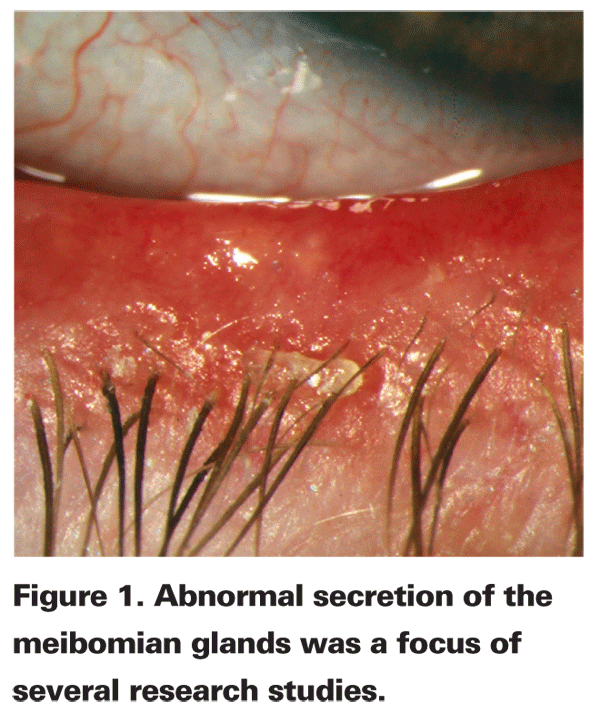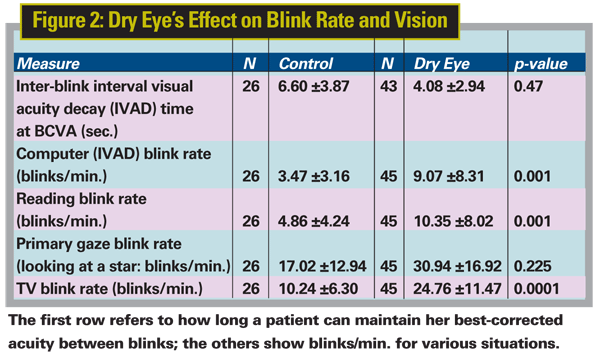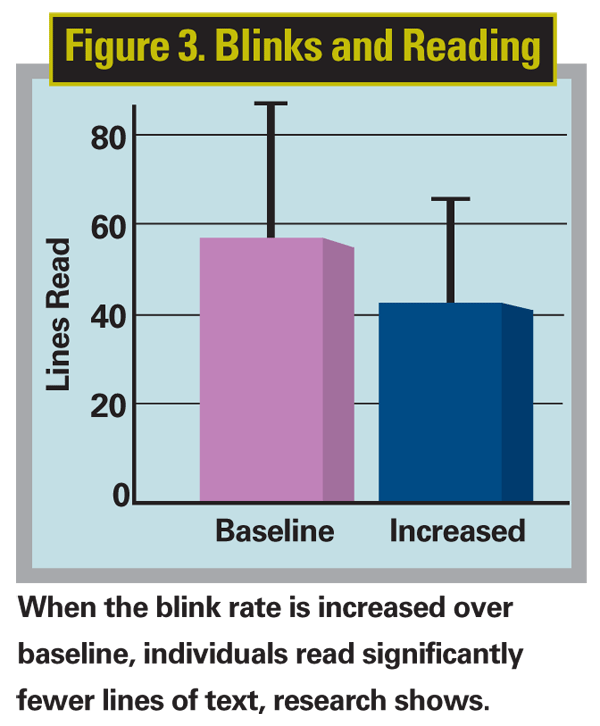This year's gathering of the Association for Research in Vision and Ophthalmology in
Retina Research
Retinal research had several arms at this year's meeting, from diagnosis to novel treatment techniques.
• Gene therapy. Research in posterior segment physiology and pathology was the topic of hundreds of posters and dozens of papers at ARVO. Gene therapy made news early in the meeting, when investigators presented results of recombinant adeno-associated viral (rAAV) vector-mediated RPE65 gene replacement (Bainbridge JW, et al. IOVS 2008;49:ARVO E-abstract 1133). In an unmasked surgical trial, three patients with Leber's Congenital Amaurosis showed signs of improvement (by visual acuity, papillary light reflex or subjective psychophysical measures) after subretinal injections of rAAV RPE65.1,2 Although changes in visual acuity and visual fields weren't clinically significant in all patients, there were no serious adverse events. While LCA is a rare condition and the number of patients in the study was small, the results suggest that rAAV vector-mediated therapies are safe, and may help facilitate further research into vector-mediated gene therapy for other conditions. Preclinical research using vector-mediated gene expression is under investigation for more common diseases as well. For example, in a study conducted primarily by researchers from Oxford BioMedica, a company developing a lentivirus treatment, EIAV-based lentiviruses expressing the angiostatic factors endostatin and angiostatin were successfully expressed in non-human primate RPE (Binley KM, et al. IOVS 2008;49:ARVO E-abstract 5340).
• Retinal delivery. Researchers presented a number of novel approaches for posterior-segment drug delivery, which may reduce the need for frequent intravitreal injections. Engineered nanoparticles (ranging from 8 nm to 300 nm, with some estimated to be composed of approximately 200,000 atoms) are essentially presoaked with drug and further coated with receptor binding proteins or molecules for a specific receptor. As a result, upon intraocular or intraperitoneal injection, these loaded nanoparticles make their way through the tissues and bind to the target site, where they unload their drug. Nanoparticles therefore allow for the targeted delivery of a drug, which may present a therapeutic advantage in some instances when genetic expression (as through gene therapy) can't readily be achieved. For diseases such as age-related macular degeneration, where the implications of widespread blockage of VEGF are unknown, nanotechnology may represent a preferred therapeutic approach that allows specific targeting on new vessels, thereby limiting the side effect of widespread vessel blockage.
Many posters displayed research that investigated various forms and applications of nanoparticle drug delivery. Sustained-release of thalidomide derivative CLT-003 using nanoparticles extended the drug's effects on retinal vascular leakage and endothelial cell growth in diabetic rats (Wassel RA, et al. IOVS 2008;49: ARVO E-abstract 4804). Cationic beta-cyclodextrin nanoparticles containing quaternary ammonium groups (QA‚CD nanoparticles) carried doxorubicin through an in-vitro model of the blood-retinal barrier. The QA‚CD nanoparticle/Dox complexes showed less cytotoxicity and were as effective as the free Dox, demonstrating the efficacy of the QA‚CD nanoparticle as a drug delivery option (Lowe T, et al. IOVS 2008;49:ARVO E-abstract 4796). Nanoparticles containing pigment epithelium-derived factor preserved some photoreceptors in RCS rats (Okano K, et al. IOVS 2008;49: ARVO E-abstract 4788).
The options for posterior drug delivery are limited only by our imagination and the available technology, and they promise to enhance the therapeutic efficacy of drugs. An intravitreal biodegradable polymer-based pouch delivered the antiviral drug ganciclovir for up to 70 days in rabbits; the device may have further uses in the delivery of other drugs, such as antibiotics and steroids (Carmichael TR, et al. IOVS 2008;49:ARVO E-abstract 5637). Thermo-responsive hydrogels were used to encapsulate bevacizumab at body temperature in vitro while remaining in solution at room temperature. The gels were able to hold and release bevacizumab, and no cytotoxic effects were observed. Further work will be performed to extend the release time beyond three weeks, and to make the hydrogels fully biodegradable, thereby increasing their applicability for posterior segment drug delivery (Mieler WF, et al. IOVS 2008;49:ARVO E-abstract 3873). One in-vitro study even suggested using placental growth factor (PlGF-1) to temporarily increase retinal pigment epithelium monolayer permeability and facilitate delivery of therapies to the retina (Abdulrazik M, et al. IOVS 2008;49:ARVO E-abstract 5009). Many other methods were also presented with similar goals: a longer effect and/or less invasive administration.
• Examining the retina. The perennial search for new quantitative measures of retinal structure and function was reflected in ARVO papers and posters. Many experiments tested the new spectral-domain optical coherence tomographs (SD-OCTs): the Cirrus (Zeiss); the Spectralis (
A novel handheld SD-OCT (Bioptigen,
Some striking results were presented using prototype ultra-high resolution OCT instruments. For example, researchers, two of whom hold patents for the device being studied, found that a UHR-OCT using adaptive optics was able to measure change in the outer segment optical path length, a functional application of OCT technology that's usually used to measure structure (Cense B, et al. IOVS 2008;49:ARVO E-abstract 4511). A prototype using an AO scanning laser ophthalmoscope was able to count cones in the macular region of healthy eyes with a high degree of repeatability, suggesting applications for tracking retinal degeneration (Roorda A, et al. IOVS 2008;49:ARVO E-abstract 1850). Future clinical development may benefit from this research into posterior segment drug delivery and quantitative measurement of retinal pathophysiology.
Allergy
While allergy is a well-defined condition, mediators continue to be found that are involved in the presentation of allergic disease in previously unknown or undefined ways. New methods of evaluating anti-allergic medications, as well as comparative studies on available and novel therapies, provide insight into the drugs' mechanisms of action and efficacies.
• Basic science. Researchers sought to elucidate the role of eosinophils and late-phase mediators in allergic disease. Interleukin-31 is known to be involved in the pathogenesis of murine allergic dermatitis, but its role in human ocular allergy is unclear. One poster described a study of a murine model that demonstrated that ophthalmic instillation of Japanese cedar pollen allergen and IL-31 aggravated clinical symptoms of allergic conjunctivitis. Eosinophil, mast cell and mononuclear cell levels in the conjunctiva were also significantly increased. No clinical or histological changes occurred in mice receiving only IL-31, suggesting that it doesn't play a primary role in allergic conjunctivitis (Kohno H, et al. IOVS 2008;49: ARVO E-abstract 2531).
Another study examined the adhesion of eosinophils to JAM (junction adhesion molecules) A, B and C, and attempted to elucidate a potential relationship between JAM and eosinophil adhesion to conjunctival epithelial cells. JAMs have been shown to support leukocyte recruitment via two integrins; JAM-A and JAM-C are expressed on conjunctival epithelial cells. TNF-a, IFNY, and PMA are in-vitro activators of eosinophils. PMA is used as a positive control in eosinophil activation, as eosinophils will adhere nonspecifically in response. Researchers found that TNF-a upregulates JAM-A expression, but has no effect on JAM-C. Neither IFNg nor PMA had any effect on either JAM-A or JAM-C. Eosinophil adhesion to JAM-coated gels was greater than to the gel alone (p<0.01).
Eosinophils activated with PMA adhered to the gel at similar levels with and without the JAM-A antibody. In cells stimulated with TNF-a and IFNY when anti-JAM-A was present, eosinophils didn't adhere. These potential mechanisms for eosinophil adhesion to conjunctival cells suggest a potential therapeutic target for reducing allergic, as well as non-allergic, ocular inflammation (Cook EB, et al. IOVS 2008;49:ARVO E-abstract 2394).
• Characteristics and diagnostics. Researchers continually strive to better understand the roles of various histamine receptors in ocular allergy. A study sponsored by Alcon compared histamine H1R, H2R, H3R and H4R receptor expression in normal patients and vernal keratoconjunctivitis patients. Scientists performed mucosal biopsies from the conjunctiva of all patients and immunostaining for each of the histamine receptors, as well as eosinophils, mast cells, lymphocytes and vascular endothelial cells.
H1R, H2R and H4R were found to be overexpressed in VKC; H4R was especially present in stromal inflammatory cells. It was proposed that the primary H4R expression on cells involved in inflammation and the immune response results in the selective recruitment of mast cells, eosinophils, dendritic cells and T cells in VKC conjunctival tissue. These findings suggest that H4R might be a therapeutic target for VKC and other immune disorders (De Dominicis C, et al. IOVS 2008;49:ARVO E-abstract 418).
• Treatment. Investigations of various medications—either currently available or under development—enhance our knowledge of which agents most effectively treat ocular allergy. In a study sponsored by Alcon, researchers studied the safety and efficacy of olopatadine HCl ophthalmic solution 0.2% for the treatment of allergic conjunctivitis and rhinoconjunctivitis. In it, patients dosed olopatadine 0.2% once daily, and recorded their ocular itching and redness three times a day during the pollen season. Olopatadine 0.2% significantly reduced ocular itching and redness throughout the study, indicating that the drug is effective during peak pollen periods (
A crossover trial employed the Ocular Surface Disease Index to compare loteprednol etabonate 0.2% to olopatadine 0.1% for the treatment of allergic conjunctivitis. Researchers, one of whom is a consultant for Bausch & Lomb, found loteprednol to be more effective in reducing OSDI scores than olopatadine when measured before the crossover. No significant differences from baseline were seen in global self assessment, drug tolerability, corneal staining, biomicroscopy, intraocular pressure or tear production in response to either drug. Significantly more patients preferred loteprednol (Koo EH, et al. IOVS 2008; 49:ARVO E-abstract 422).
Dry Eye and Lid-Margin Disease
The etiology of dry eye is convoluted, having environmental, immunological and hormonal influences. Lid-margin disease suffers from a similarly complex etiology, as age, hormones, dry eye and bacteria may be involved. Both conditions can become debilitating and pose significant quality-of-life concerns. Here's what surfaced at ARVO about these conditions.
• Characteristics and diagnostics. Symptoms of dry eye can vary greatly across patient populations, and the patterns of this variation were investigated in a study on the diurnal changes in the symptomatology and daily activity limitations of dry-eye patients. The research demonstrated that 64 percent of dry-eye patients experienced their worst symptoms in the evening, with the rest reporting their worst symptoms in the morning. Between these groups, differences emerged: There was a significant worsening in the ability to read, watch TV and drive for the evening group, while the morning group experienced significant worsening in symptoms of photophobia and grittiness. The researchers suggested that these findings might relate to differences in the underlying pathophysiology between the groups (Schindelar MR, et al. IOVS 2008;49:ARVO E-abstract 5319).
Hormones factor into lid-margin disease, but their exact involvement and their potential role in the treatment of the conditions remain under investigation. Research presented at the conference revealed the role of androgens in pre-menopausal women with dry eye through investigation of oral contraceptive use. Dry-eye patients taking oral contraceptives had abnormal androgen profiles and lower-than-normal testosterone levels, as well as dihydroepiandrosterone sulfate levels (Winokur J, et al. IOVS 2008;49: ARVO E-abstract 5285). Other investigators at this year's meeting continued their research on the impact of menstrual cycles on gland physiology and illuminated cyclical changes in meibomian gland physiology during the menstrual cycle. The research demonstrated that the meibomian gland orifice diameter was negatively correlated with serum concentrations of estradiol and progesterone. Additionally, the volume of meibum and tear-film breakup time in both female and male subjects were observed to be positively correlated with the serum concentration of testosterone (Suzuki T, et al. IOVS 2008; 49:ARVO E-abstract 92).
Another group presented findings on human tear lipid components using spectroscopy. The group demonstrated that meibum lipid composition changes in subjects with meibomian gland dysfunction reflected a hydrocarbon chain order that was higher than in controls (Borchman D, et al. IOVS 2008;49:ARVO E-abstract 82).
Others presented findings on the refractory period—the optimal time to provoke a gland secretion after the initial provocation—and concluded that the highest percentage of glands to secrete at the second provocation occurred two hours after the initial provocation (See Figure 1) (Shapiro A, et al. IOVS 2008;49:ARVO E-abstract 84). These results were bolstered by other research that reached the same conclusion via more complex methods of gland secretion provocation (
• Dry-eye treatment. An intriguing component of research on current treatments was the visual function implications of artificial tears. A poster sponsored by Alcon presented the relationship between residence time and the visual effect, measured by contrast sensitivity at various time points, with artificial tears. The data supported the need for an artificial tear remain in the tear film beyond any initial blurring (Hall JQ, et al. IOVS 2008;49: ARVO E-abstract 110).
A poster sponsored by Allergan demonstrated an increase in higher-order aberrations immediately after artificial tear instillation, and suggested that this finding may be associated with the decrease in contrast sensitivity previously observed to occur immediately post-instillation (Ridder WH, et al. IOVS;49:ARVO E-abstract 107).
With only one prescription eye drop indicated for dry eye, the treatment pipeline is an important topic. Because dry eye manifests both in objective clinical signs and subjective symptoms, agents able to address both of these types of traits are the ultimate treatment goal. Several findings were reported at the meeting, including exciting Phase II results of doxycycline 0.025% ophthalmic solution (ALTY-0501) for the treatment of both signs and symptoms of dry eye. According to researchers, one of whom is an employee of ALTY-0501's maker, Alacrity Bioscience, the solution demonstrated statistically significantly lower fluorescein staining scores than vehicle after subjects were exposed to the Controlled Adverse Environment (CAE) on day 28, as well as statistically significant benefits compared to vehicle in patient diary scores for symptoms of burning, stinging and grittiness throughout the study period (Ousler GW, et al. IOVS 2008;49: ARVO E-abstract 102).
A group of doctors from
Promising results were also presented on a potential future therapy involving a new class of mediators, called resolvins, involved in the resolution of inflammatory processes. One group of researchers demonstrated a reduction in staining and maintenance of goblet cell density in mice exposed to desiccating stress when treated with resolvin E1 and its analog RX-10008 administered as methyl ester prodrugs. We look forward to learning more about these agents. (Gjorstrup P, et al. IOVS 2008;49:ARVO E-abstract 122).
• Treatment for lid-margin disease. In addition to practicing good lid-margin hygiene, many patients require further treatment. Tapered oral antibiotic use is often recommended, and researchers presented findings on the potential for beneficial treatment effect with minocycline in addition to lid hygiene for meibomian gland dysfunction (Souchier M, et al. IOVS 2008;49:ARVO E-abstract 2391).
Researchers from 
• Visual function and dry eye. Our knowledge of the interplay between visual function and dry eye continues to grow, as evidenced by several important studies presented at this year's meeting. Visual tasking is known to impact blink rate, and thus to influence ocular surface protection. Two posters reported comparative aspects of blink rates during various tasks, as measured by the inter-blink interval visual acuity decay (IVAD) test. The first compared spontaneous blink rates across visual tasks in dry-eye vs. normal subjects, revealing significant differences in blink rates between the two populations. The poster also presented results that demonstrate increased keratitis scores of dry-eye subjects who spent considerable portions of time performing activities associated with low blink rates (e.g., working on a computer) (See Figure 2, above) (Walker PM, et al. IOVS 2008; 49:ARVO E-abstract 5317). The second poster compared baseline blink rates to increased rates across the same series of tasks, and revealed that rapid blink rate (1 blink/sec) significantly impaired best-corrected acuity, visual searching and reading (See Figure 3, below) (Lane KJ, et al. IOVS 2008;49:ARVO E-abstract 5318).
Investigators presented additional research into visual function parameters in a poster correlating lipid layer stability and visual function as assessed by a new contrast sensitivity test. The poster found a potential relationship between lipid layer stability and vision (Barabino S, et al. IOVS 2008;49:ARVO E-abstract 79). Also, research correlated visual thresholds with age using computer programs that displayed Landolt C's of varying contrast and orientation to test central and peripheral visual performance (Rauscher FG, et al. IOVS 2008;49: ARVO E-abstract 2887). 
ARVO's excellent research continues to push the boundaries of our knowledge, and we look forward to new research at ARVO 2009.
Dr. Abelson, an associate clinical professor of ophthalmology at
Dr. Abelson would like to thank the following staff at ORA for their contributions to this article: Donna Welch, RN, BSN, vice president of clinical affairs; Ciera Maffei, Stephanie Leung, medical writers; James McLaughlin, manager of retina science and technology; Akimitsu Makino and Rebecca White, clinical research associates; and Lauren Lilyestrom, managing editor.
1.Bainbridge JW, Smith AJ, Barker SS, et al. Effect of gene therapy on visual function in Leber's congenital amaurosis. N Engl J Med 2008;358:21:2231.
2. Maguire AM, Simonelli F, Pierce EA, et al. Safety and efficacy of gene transfer for Leber's congenital amaurosis. N Engl J Med 2008;358:21:2240-8.



